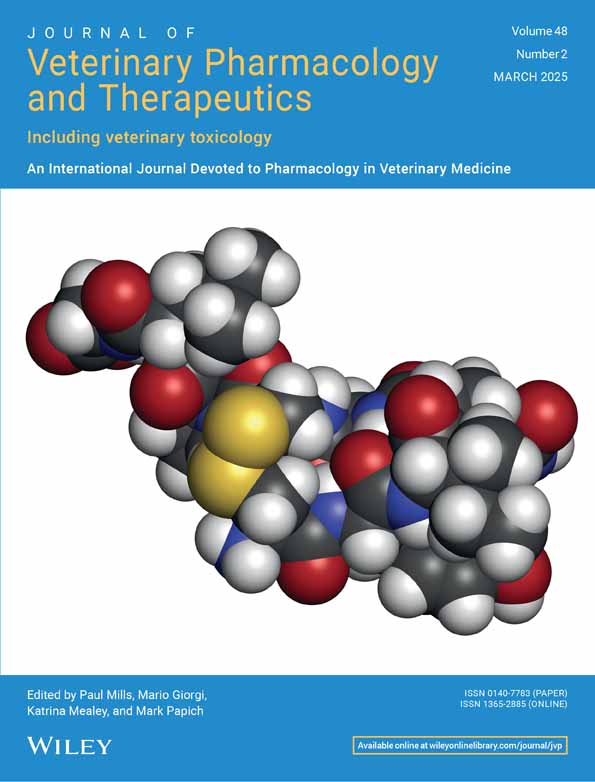Pharmacokinetics of Salbutamol in Thoroughbred Horses After a Single Intravenous or Inhaled Administration
Funding: This work was supported by the Laboratory of Racing Chemistry and the Japan Racing Association.
ABSTRACT
Salbutamol is a short-acting and selective beta-2 adrenergic agonist. Inhaled (IH) administration of salbutamol is widely used to control lower respiratory tract disease in horses. Here, we estimated the pharmacokinetic parameters of salbutamol after a single intravenous (IV) or IH administration in six horses, and we statistically analysed the detection times with various dosing regimens. Plasma and urine concentrations of salbutamol were measured by liquid chromatography–tandem mass spectrometry, and data were modelled by using a nonlinear mixed effect model followed by Monte Carlo simulation (MCS). With IH salbutamol, the maximum plasma concentration was 0.12 ± 0.06 ng/mL at 0.29 ± 0.17 h after administration. Typical values were, for clearance, 1.53 L/kg/h; distribution volume at steady state, 5.43 L/kg; terminal half-life, 6.06 h; IH bioavailability, 19.0%; and urine to plasma ratio, 2057. Statistically estimated 95th percentile detection times in the urine at levels below the international screening limit (0.5 ng/mL) proposed by the International Federation of Horseracing Authorities, as simulated in 5000 horses by MCS, were 44 h after 1.6 μg/kg q 24 and 54 h after 1.6 μg/kg q 4 h over a 3-day IH administration period.
Conflicts of Interest
The authors declare no conflicts of interest.
Open Research
Data Availability Statement
All relevant data are supplied in the manuscript.




